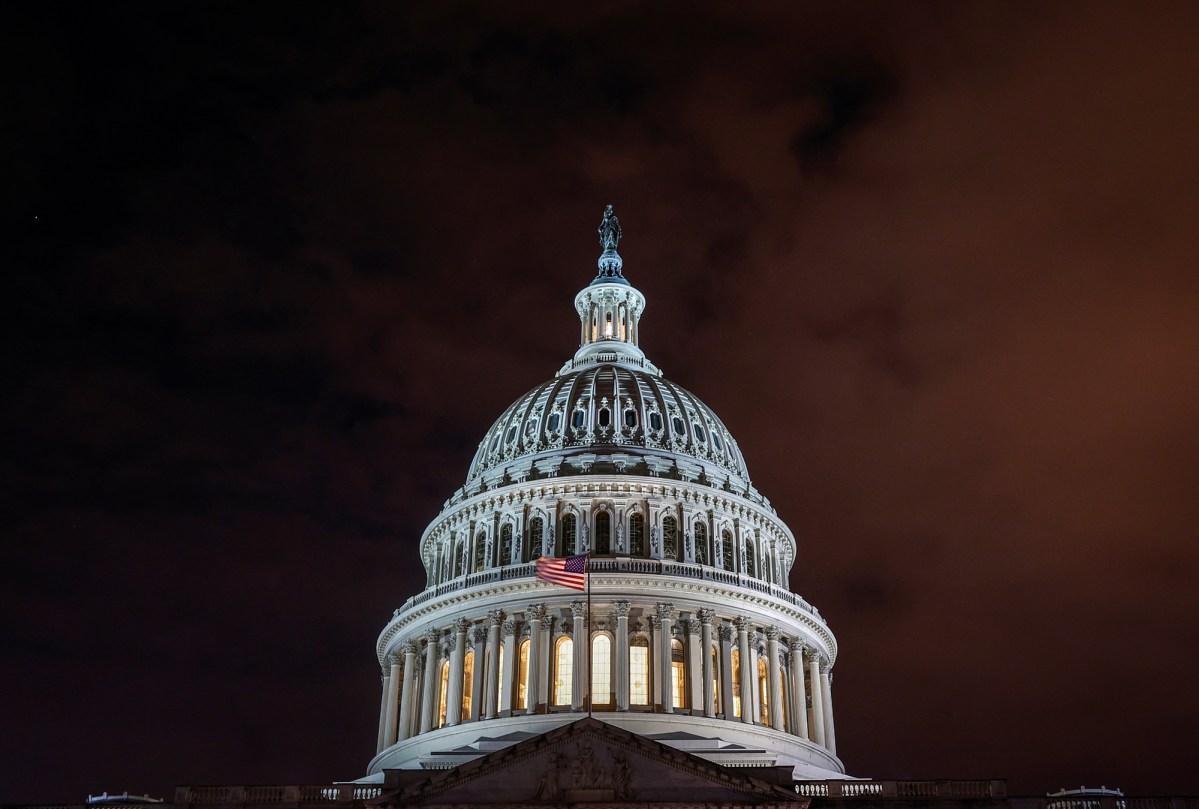Governor Gavin Newsom’s insistence that the Legislature approve a housing reform proposal is the condition for the tentative deal that California leaders achieved Tuesday night on the state budget.
The political difficulty of changing long-standing environmental standards to expedite home construction in a state governed by Democrats is highlighted by the last-minute negotiations surrounding the spending plan, which goes into effect on July 1.
Despite pressure from the governor and widespread criticism of a law that reform proponents claim has hampered California’s ability to develop, the party has been reluctant to do more than amend the California Environmental Quality Act or approve one-time exemptions.
The plan is one of several measures that Newsom and Democratic lawmakers are anticipated to propose as part of the $321.1 billion budget in the days ahead. The agreement represents the Legislature’s opposition to the governor’s suggested cuts to close a $12 billion budget shortfall that is anticipated in the upcoming year, citing a lack of clarity regarding the extent of the state’s financial issues.
“We are grateful for the close collaboration with the Legislature in achieving this budget agreement,” Newsom spokesperson Izzy Gardon said. The completion of legislation to reduce red tape and free up resources for housing and infrastructure development throughout the state is a prerequisite for the governor’s signing.
The agreement follows weeks of discussions about how to reduce the deficit brought on by California’s excessive spending and begin addressing even more significant financial issues that are expected to arise in the future, including from possible changes to federal policy.
To make up the difference, the provisional agreement mostly depends on borrowing, drawing from state reserves, and reallocating funds. The budget maintains a tradition in the state Capitol of avoiding taking on California’s long-term budget problems while sparing state services from immediate pain by reducing and postponing many of the governor’s recommended cuts.
James Gallagher (R-Yuba City), the Republican leader of the assembly, said the budget accord documents the state’s financial issues.
Gallagher stated that excessive spending is the reason we are in this predicament. Democrats have supported programs that we have committed to for a long time, but as everyone has warned, funding is insufficient to support them all, and they do not want to reduce their program that they helped build.
The governor and lawmakers have reached a deal that will restore asset limit testing for Medi-Cal users and limit the spread of state-sponsored healthcare to unauthorized immigrants. However, the final agreement saves the state less than what Newsom had initially suggested.
In addition to rejecting the governor’s proposal to limit the number of overtime hours that in-home caregivers might work, the plan reinstates cost-of-living adjustments for child care providers.
Legislative Democrats were able to get an additional $500 million for funds for Homeless Housing, Assistance, and Prevention. The governor initially opposed providing counties with additional financing, and he has criticized them for failing to demonstrate results from the billions of dollars in state funds they have received to combat homelessness.
Jesse Gabriel (D-Encino), the Assembly Budget Chair, disputed the idea that the Legislature hasn’t actually tightened its belt. Before making significant cuts to safety net services that Californians depend on, lawmakers are attempting to strike a balance between compassion and budgetary discipline, he added.
According to Gabriel, that is the balance we are attempting to achieve with this budget by being accountable, concentrating on the job that must be done regardless, and realizing that there is a significant amount of uncertainty for a variety of reasons.
Additionally, the budget maintains Newsom’s proposal to increase the California Film and Television Tax Credit by $750 million, which is backed by unions that represent industry workers and Hollywood film studios.
It is anticipated that the provisional deal would act as a springboard for more difficult financial negotiations over more cuts in the upcoming months.
According to state officials, California may face a more severe financial crisis in 2026–2027 and anticipates losing federal funding under the Trump administration.
The following are some of the main components of the budget agreement, as described in the agreement and legislative summaries:
A housing caveat
The agreement between the Legislature and Newsom, which has been referred to as a “poison pill” embedded into the budget plan, would only become law if lawmakers forward a draft of a proposal first proposed by Sen. Scott Wiener (D-San Francisco) to the governor.
It is anticipated that Wiener’s bill will streamline the process of creating environmental impact studies and reduce the amount of construction projects that would need a thorough environmental study under CEQA.
The law might signify a dramatic shift in state policy that facilitates construction, especially when combined with another proposal that could exclude additional urban housing complexes from CEQA.
Newsom’s refusal to accept a budget agreement without the CEQA exemptions is essentially forcing the Wiener proposal through. As of Tuesday night, the idea was still in draft form.
During the 2018 gubernatorial campaign, the governor set ambitious targets to increase house development, but he hasn’t been able to increase building to satisfy demand and lower housing costs.
In his recent book Abundance, columnist Ezra Klein of the New York Times skillfully exposed the inaction in California brought about by the state’s flagship environmental law and a lack of political will. This increased pressure on the governor and other Democrats to change their strategy and advocate for more significant fixes this year.
Homelessness & Housing
According to experts, two legislation signed into law by Governor Gavin Newsom will significantly alter the California Environmental Quality Act for the first time in many years. Lawmakers anticipate these reforms will spur a surge in public infrastructure and housing projects.
The budget agreement, which excludes a separate Newsom demand to expedite the Delta tunnels project, requires the CEQA reform bill to be passed by Monday.
Changes to Med-Cal funding
The California budget is having serious issues as a result of Medi-Cal cost overruns. The difficulties are caused by the unexpectedly high cost of expanding state-sponsored healthcare to include medical care for additional participants including all income-eligible undocumented immigrants.
In May, Newsom’s budget proposal proposed significant cuts to the healthcare program for undocumented individuals. His plan called for removing long-term care benefits, reducing full dental coverage, and freezing new enrollment as of January 1st, requiring all adults to pay $100 monthly premiums. Although the adjustments only resulted in modest savings for the year, they have the potential to save billions of dollars in subsequent years.
In the end, lawmakers decided to mandate that adults who are undocumented immigrants and are between the ages of 19 and 59 pay $30 monthly fees starting in July 2027. They intend to implement Newsom’s enrollment cap, but instead of immediately terminating eligibility, they will let individuals three months to reapply if their coverage expires.
Democrats agreed to remove full dental coverage for undocumented adult immigrants, but they postponed the change until July 1, 2026.
California
In order to limit eligibility for low-income seniors and those with disabilities, Governor Gavin Newsom is proposing to reinstate an asset test.
State officials decided to restore significantly greater caps on the assets that Medi-Cal recipients might own and still be covered, compared to the governor’s first proposal. Previously set at a few thousand dollars, the new limitations would be $130,000 for people and $195.00 for couples.
Additionally, they accepted Newsom’s suggestion to eliminate Medi-Cal coverage for prescription weight-loss medications.
Shifting money around
As a result of the negotiations, general fund spending was reduced from $232 billion to an anticipated $228 billion for 2025–2026, less than what the Legislature had suggested in a rebuttal to Newsom’s May budget revision.
More funds, including $1 billion next year, are being used by officials from California’s cap-and-trade program, which places restrictions on businesses’ greenhouse gas emissions and enables them to purchase pollution credits from the state. Additionally, they are funding environmental programs with $300 million from climate change bonds rather than the general revenue.
To address Medi-Cal cost overruns, lawmakers and the governor decided to postpone a $3.4 billion loan payment and extend it by an additional $1 billion the next year.
California
California Governor Gavin Newsom visited California State University, Stanislaus, on Monday to preview his $322.2 billion budget proposal for 2025–2026.
Trump uncertainty
In order to balance the budget, the plan uses an additional $6.5 billion from other cash reserves and maintains the agreement to withdraw $7.1 billion from the state’s rainy day fund to assist cover the deficit.
California officials have been warning for months about the alleged Trump effect on the state budget.
According to UCLA financial analysts, Trump’s tariff policies and immigration raids will have a negative impact on construction, hotels, agriculture, and other important industries, causing the state economy to slow down in the coming months.
In the meanwhile, the state is cautioning that during a special session in the fall or early next year, lawmakers may need to approve significant budget cutbacks in August or September in response to federal funding decreases to California.
An Assembly summary of the budget agreement states that future deficit forecasts will be between $17 and $24 billion per year.
California
Governor Gavin Newsom attempted to attribute the decline in California state income to President Trump’s tariff policy on the eve of his budget presentation.
More to come
This week, a number of trailer bills that surface online at random times are releasing the final budget deal to the public in small chunks.
Before the July 1 deadline for the budget to take effect, lawmakers are anticipated to approve supplementary legislation by Monday and pass a major budget bill on Friday. The CEQA housing exemptions are one piece of legislation that won’t be printed until the end of the week.
Other decisions, such as reauthorizing California s cap-and-trade program, will be considered later in the year outside of the budget process.










